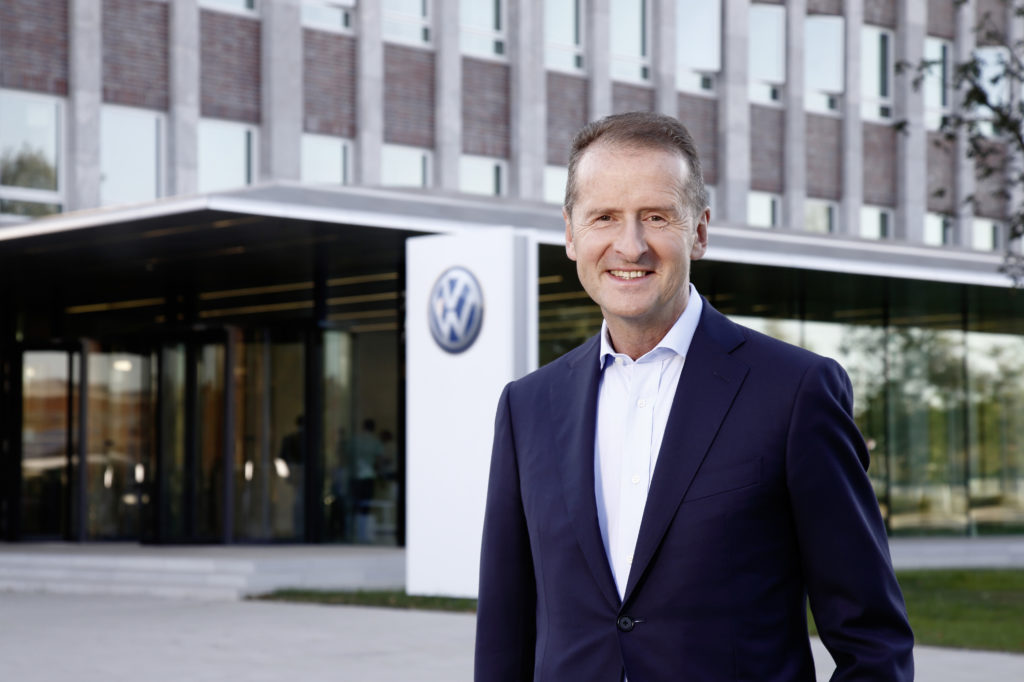
To global automotive CEOs, the end of the 2018 is reminiscent of a decade ago when they were at the vortex of crucial economic developments worldwide—none of them good. After enjoying a long period of record sales and overall prosperity, important auto chiefs are in the middle of the action again these days—and again, none of it is good. It also looks like they’ve got a long ramp of difficulties ahead going into 2019.
Whereas after the financial collapse of 2008, the action in the U.S., at least, was aimed at saving General Motors and Chrysler from collapse, nowadays the concerns are relatively less extreme but still very important. How will these auto chiefs navigate the global stagnation in auto sales at the same time of rising trade pressures brought by President Trump?
Two epicenters are emerging for much of the drama ahead, at least in the short term: Washington, D.C., and Wolfsburg, Germany. By visiting Washington, Volkswagen AG CEO Herbert Diess, Daimler AG CEO Dieter Zetsche and BMW’s CFO Nicolas Peter demonstrated that their companies favor a direct approach to dealing with Trump, who through his two years in office has shown an eagerness for personal talks with company chiefs.
The three recently met with President Trump and U.S. trade officials at the White House, nominally to talk about all the ways in which the German automakers already are investing more in American facilities and jobs. Not far underneath the surface, of course, was whether such niceties would help the Germans avoid Trump’s threat to slap 25-percent tariffs on automotive imports.
Also not far in the background was growing talk, in part fueled by Diess in Washington, of the possibility of a broad alliance between two troubled companies, VW and Ford Motor Co. So far all they’ve agreed is to explore joint projects for commercial vehicles, probably in Europe.
But a broader transatlantic hookup might also make sense in part because of what Ford CEO Jim Hackett has been doing lately: batting away reporters’ questions about whether Morgan Stanley analyst Adam Jonas was in the ballpark with his prediction that Ford would have to eliminate potentially tens of thousands of jobs.
The question is ripe, of course, partly because Hackett, in July, signaled that he would be overseeing major cost cuts sometime soon, and partly because General Motors CEO Mary Barra dropped her hammer already by announcing the company’s major
“transformation” plan that includes shuttering five North American factories and eliminating as many as 15,000 jobs, in addition to a recent buyout of salaried personnel.
Diess also faces questions about capacity in the U.S. After the meeting with Trump, Diess told journalists he’d like to see VW become a 5-percent-share player in the U.S., up from its current 1.9 percent. VW hasn’t been able to climb much from that level even seven years after opening its plant in Chattanooga, Tennessee, and even after introducing new SUV models to tap into the current American craze over utility vehicles.
And Volkswagen could access a low-cost, low-risk way to expand effective U.S. capacity without having to build a facility adjacent to or in addition to its Tennessee plant.

Chief Executive Group exists to improve the performance of U.S. CEOs, senior executives and public-company directors, helping you grow your companies, build your communities and strengthen society. Learn more at chiefexecutivegroup.com.
0

1:00 - 5:00 pm
Over 70% of Executives Surveyed Agree: Many Strategic Planning Efforts Lack Systematic Approach Tips for Enhancing Your Strategic Planning Process
Executives expressed frustration with their current strategic planning process. Issues include:
Steve Rutan and Denise Harrison have put together an afternoon workshop that will provide the tools you need to address these concerns. They have worked with hundreds of executives to develop a systematic approach that will enable your team to make better decisions during strategic planning. Steve and Denise will walk you through exercises for prioritizing your lists and steps that will reset and reinvigorate your process. This will be a hands-on workshop that will enable you to think about your business as you use the tools that are being presented. If you are ready for a Strategic Planning tune-up, select this workshop in your registration form. The additional fee of $695 will be added to your total.

2:00 - 5:00 pm
Female leaders face the same issues all leaders do, but they often face additional challenges too. In this peer session, we will facilitate a discussion of best practices and how to overcome common barriers to help women leaders be more effective within and outside their organizations.
Limited space available.

10:30 - 5:00 pm
General’s Retreat at Hermitage Golf Course
Sponsored by UBS
General’s Retreat, built in 1986 with architect Gary Roger Baird, has been voted the “Best Golf Course in Nashville” and is a “must play” when visiting the Nashville, Tennessee area. With the beautiful setting along the Cumberland River, golfers of all capabilities will thoroughly enjoy the golf, scenery and hospitality.
The golf outing fee includes transportation to and from the hotel, greens/cart fees, use of practice facilities, and boxed lunch. The bus will leave the hotel at 10:30 am for a noon shotgun start and return to the hotel after the cocktail reception following the completion of the round.